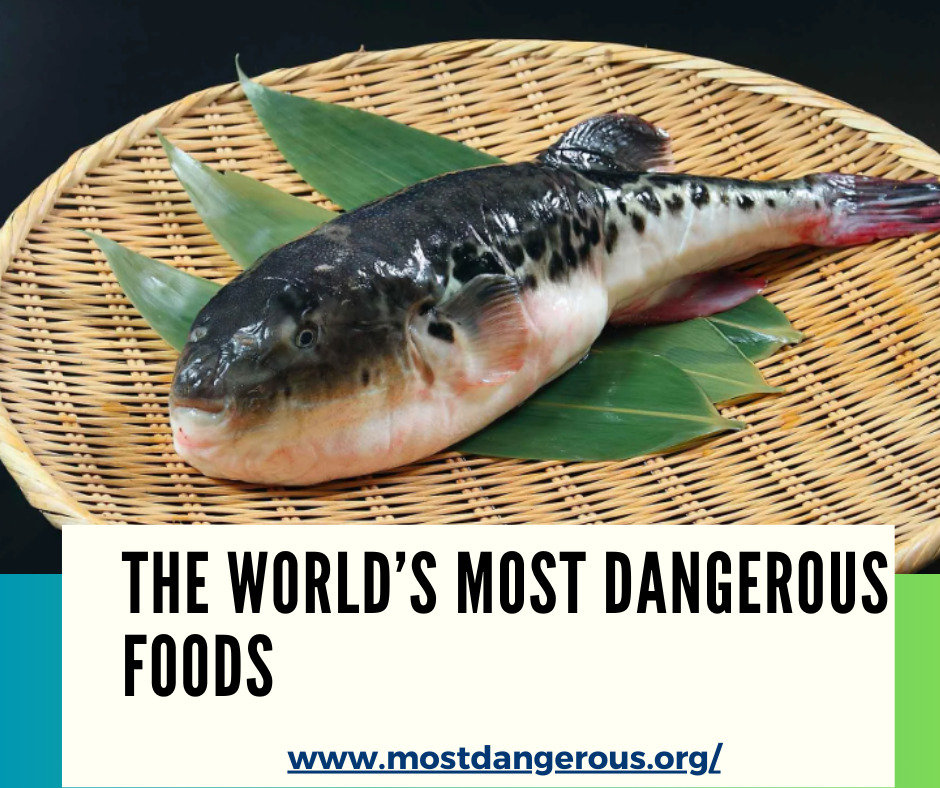The World’s Most Dangerous Foods.
Food is not only a source of sustenance but also a reflection of culture, tradition, and innovation.
While many dishes delight the taste buds and evoke fond memories, some culinary creations come with a warning label.
From toxic delicacies to potentially lethal treats, the world is home to a variety of foods that require caution, courage, and sometimes, a strong stomach.
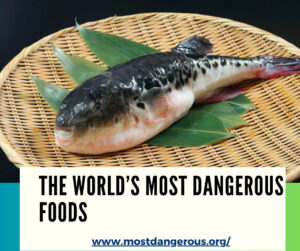
Join me as I explore the world’s most dangerous foods, each with its unique story and significance.
Top 5 Most Dangerous Foods in the World
1. Fugu (Pufferfish) – Japan
Fugu, or pufferfish, is perhaps one of the most infamous delicacies in the world, known for its deadly toxin, tetrodotoxin.
Chefs who prepare fugu undergo rigorous training to ensure that the toxic parts of the fish are removed, leaving only the safe and flavorful flesh.
Despite these precautions, consuming improperly prepared fugu can lead to paralysis, respiratory failure, and even death.
Yet, for adventurous diners in Japan, the allure of fugu lies in its delicate texture and subtle flavor, making it a sought-after culinary experience.
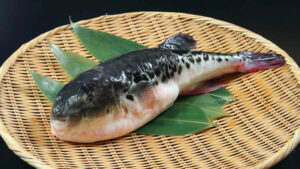
2. Casu Marzu – Sardinia, Italy
Casu marzu, also known as “rotten cheese,” is a traditional Sardinian delicacy that pushes the boundaries of culinary daring.
Made from sheep’s milk cheese infested with live insect larvae, casu marzu is not for the faint of heart.
The larvae digest the cheese, breaking down its fats and proteins and imparting a unique texture and flavor.
However, consuming casu marzu poses risks of gastrointestinal discomfort and, in some cases, intestinal larval infestation.
Despite its controversial nature, casu marzu holds cultural significance in Sardinia and remains a prized delicacy among aficionados.
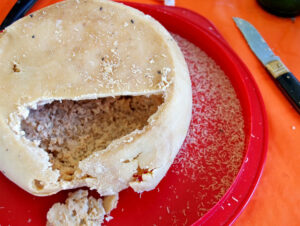
3. Ackee Fruit – Jamaica
The ackee fruit, native to West Africa and widely cultivated in Jamaica, is a staple ingredient in Caribbean cuisine.
However, consuming the unripe or improperly prepared fruit can lead to a serious condition known as Jamaican vomiting sickness.
This illness is caused by the presence of hypoglycin A, a toxin found in the fruit’s seeds and flesh.
When ripe and prepared correctly, ackee is safe to eat and prized for its creamy texture and mild flavor.
Nonetheless, caution is advised when handling and consuming this tropical fruit.
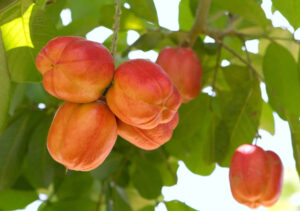
4. Sannakji – South Korea
Sannakji, or live octopus, is a traditional Korean dish that showcases the country’s affinity for seafood.
Served raw and still wriggling on the plate, sannakji offers a sensory experience like no other.
However, the tentacles of the octopus continue to move even after being severed from the body, posing a choking hazard if not chewed thoroughly.
The suction cups on the octopus’ arms can also adhere to the throat or esophagus, leading to potentially life-threatening situations.
Despite these risks, sannakji remains a popular dish among adventurous eaters in South Korea.
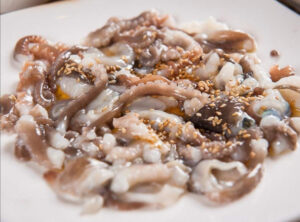
5. Blood Clams – China
Blood clams, also known as “blood cockles,” are a type of clam harvested in coastal regions of China and Southeast Asia.
These clams are notorious for their high levels of bacteria and viruses, including hepatitis A and E.
Despite being banned in several countries due to food safety concerns, blood clams are still consumed in some regions, often served raw or lightly cooked.
However, consuming contaminated blood clams can result in severe gastrointestinal illness and infectious diseases, underscoring the importance of proper food handling and sanitation practices.
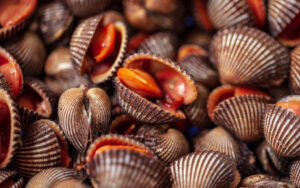
BONUS
Fesikh- Egypt
Fesikh, an Egyptian delicacy made from fermented gray mullet, poses a serious health risk due to potential botulinum toxin contamination.
Despite its cultural significance during the spring festival, Sham el-Nessim, consuming Fesikh can lead to botulism, a severe illness with paralysis and respiratory failure.
Health authorities issue warnings and guidelines for its safe preparation and consumption, but the risks remain significant.
In 2019, 70 people were hospitalized, with one fatality reported in the Egyptian city of Alexandria alone, highlighting the grave dangers associated with consuming Fesikh.
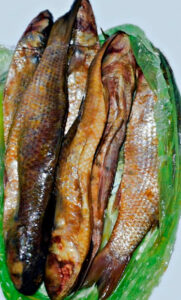
Conclusion
As culinary enthusiasts and adventurous eaters, it’s essential to approach dangerous foods with caution and respect for their inherent risks.
While these delicacies may offer unique flavors and cultural insights, they also carry the potential for serious health consequences if not prepared or consumed properly.
Whether sampling fugu in Japan or savoring casu marzu in Sardinia, remember to prioritize safety and awareness when embarking on gastronomic adventures around the world.
ALSO READ:
